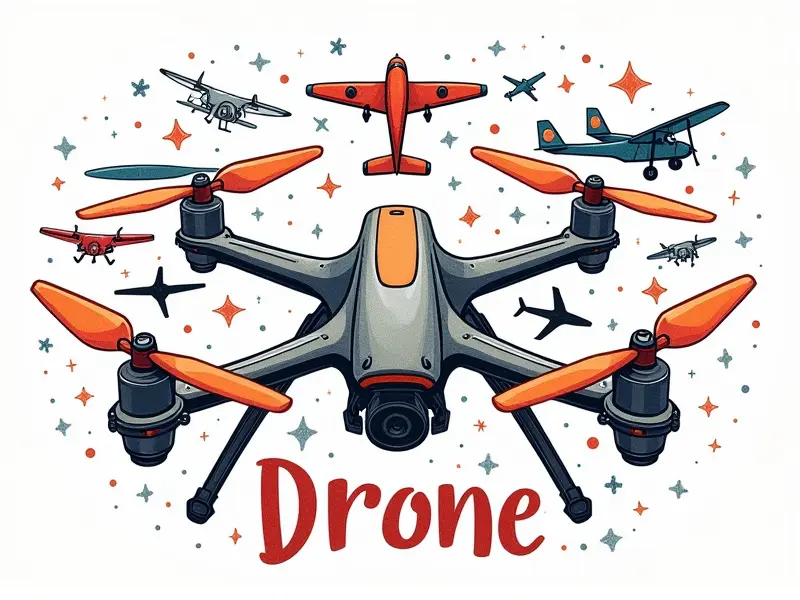Best FPV drone frame materials

Ultimate Guide to FPV Drone Frame Materials
Welcome to the ultimate guide on FPV drone frame materials. Choosing the right material for your FPV (First-Person View) racing or recreational drone is crucial for performance, durability, and overall enjoyment of your hobby. This comprehensive article will explore various options available in the market and help you make an informed decision.
Top 5 Best FPV Drone Frame Materials
The top five materials commonly used in FPV drones are carbon fiber, aluminum, plastic, wood, and composite blends. Each material offers unique advantages that cater to different needs:
- Carbon Fiber: Known for its exceptional strength-to-weight ratio.
- Aluminum: Provides a good balance of weight and durability.
- Plastic: Offers affordability and ease of manufacturing.
- Wood: Lightweight but less durable compared to other options.
- Composite Blends: Combines the benefits of multiple materials for enhanced performance.
Choosing the Right Material for Your FPV Drone Frame
Selecting the appropriate material depends on your specific requirements. Consider factors such as flight time, maneuverability, and crash resistance when making your decision:
- Flight Time: Lighter materials like plastic or wood increase battery efficiency.
- Maneuverability: Carbon fiber frames offer superior agility due to their stiffness.
- Crash Resistance: Denser materials such as aluminum provide better protection against impacts.
Why Carbon Fiber is King in FPV Drone Frames
Carbon fiber reigns supreme among FPV drone enthusiasts due to its unmatched strength-to-weight ratio. This material allows for ultra-light yet robust frames that can withstand high-speed crashes while maintaining optimal aerodynamics:
- Strength: Carbon fiber is incredibly strong, capable of absorbing significant impact forces.
- Weight: It’s extremely lightweight compared to other materials, enhancing flight performance.
- Aerodynamics: Smooth surface and precise shaping optimize air flow around the frame.
Lightweight vs Durable: Balancing Act in FPV Drone Frames
When selecting a material for your drone, finding the right balance between weight and durability is crucial. Lighter materials like plastic or wood enhance flight time but compromise on crash resistance:
- Lightweight Materials: Ideal for extended flights and agile maneuvers.
- Durable Materials: Provide better protection against crashes and rough handling.
Impact of Aluminum on FPV Racing Drone Performance
Aluminum frames offer a reliable alternative to carbon fiber, combining decent weight with good durability. This makes them popular among budget-conscious pilots who prioritize performance over cost:
- Weight: Slightly heavier than carbon fiber but still lightweight.
- Durability: More resistant to damage from impacts and crashes.
Innovations in Plastic Frame Materials for FPV Drones
New advancements in plastic technology have led to the development of high-strength, impact-resistant plastics that challenge traditional notions about their suitability for racing drones. These materials are increasingly popular due to their affordability and ease of manufacturing:
- Impact Resistance: Enhanced with additives to improve toughness.
- Affordability: Cheaper than carbon fiber or aluminum, making them accessible to beginners.
Budget-Friendly Alternatives to Carbon Fiber for FPV Frames
If budget constraints limit your choice of materials, consider alternatives like aluminum or high-strength plastic. These options offer similar performance characteristics at a lower cost:
- Aluminum: Provides good balance between weight and durability.
- Plastic: Offers affordability with recent advancements in material science.
Heat-Resistant FPV Drone Frame Choices
Flying FPV drones can generate significant heat, especially during high-speed maneuvers. Choosing materials that resist thermal degradation is essential for maintaining performance and longevity:
- Ceramic Coatings: Applied to aluminum or carbon fiber frames.
- Specialized Plastics: Formulated with heat-resistant properties.
Must-Know Tips for Selecting FPV Drone Frame Materials
To ensure you make the best choice, consider these tips when selecting your frame material:
- Define Your Needs: Prioritize flight time, durability, or cost.
- Research Material Properties: Understand strengths and weaknesses of each option.
- Consult Reviews: Seek insights from experienced FPV pilots.
Comparing Popular FPV Drone Frame Materials
A thorough comparison of the most popular materials can help you make an informed decision:
| Carbon Fiber | Aluminum | Plastic | Wood | |
|---|---|---|---|---|
| Strength | High | Moderate | Low-Moderate | Low |
| Weight | Lightweight | Slightly Heavy | Very Light | Extremely Light |
| Durability | High-Durable | Moderate-Durable | Low-Moderate Durable | Low Durable |
| Cost | Expensive | Affordable-Expensive | Inexpensive | Moderate-Inexpensive |
Conclusion
Selecting the right material for your FPV drone frame is a critical decision that impacts performance, durability, and cost. By understanding the unique properties of each option and balancing weight against strength, you can choose the perfect material to meet your needs. Whether you opt for high-performance carbon fiber or budget-friendly aluminum, making an informed choice will enhance your flying experience.

